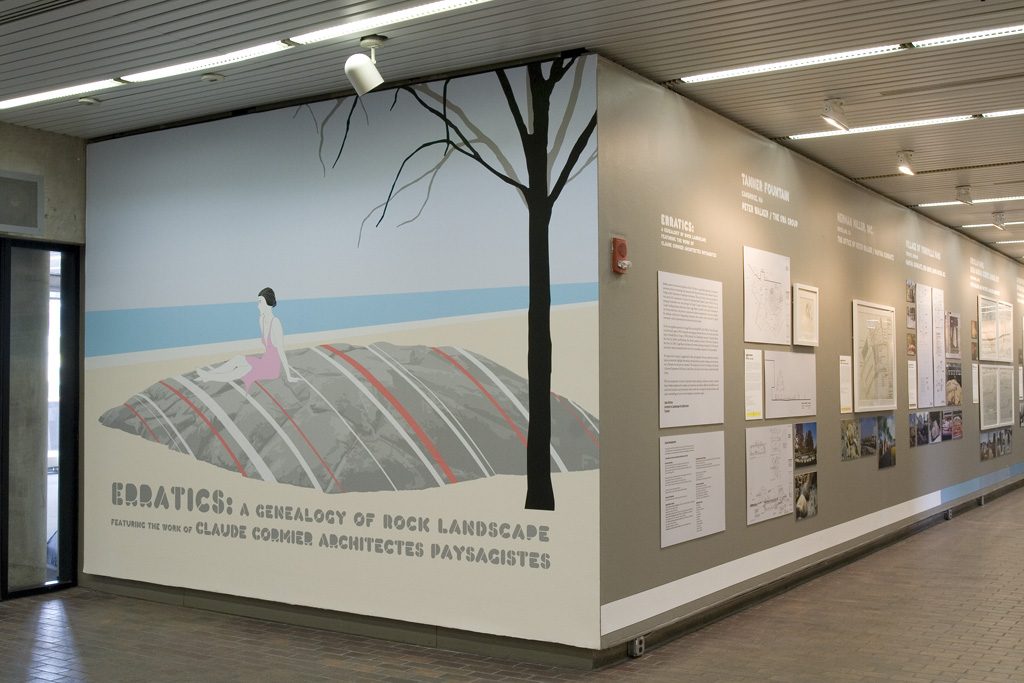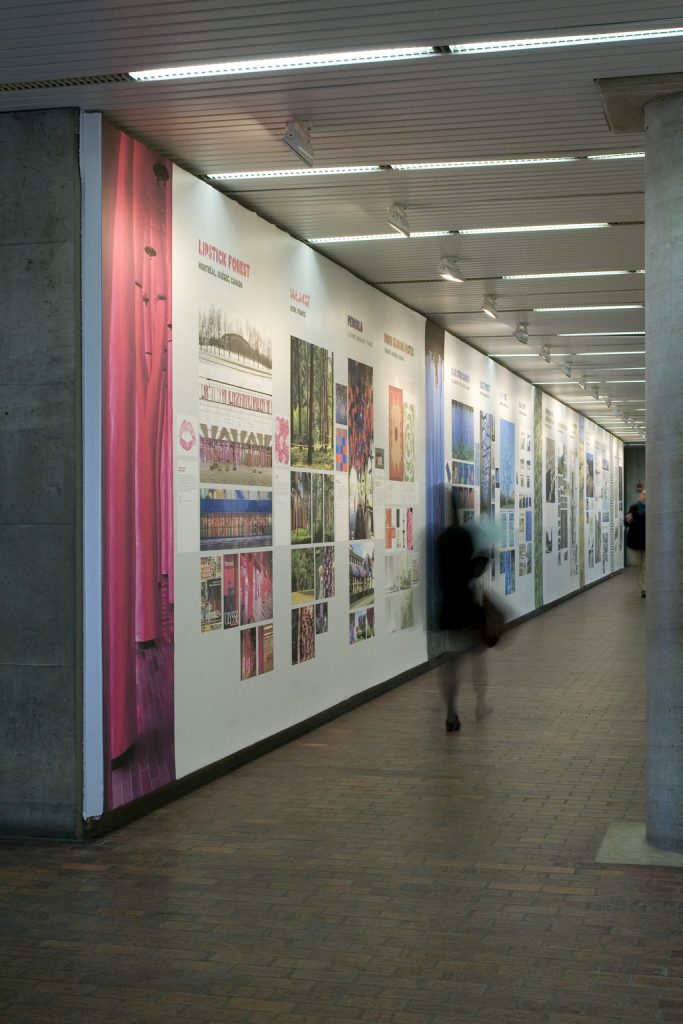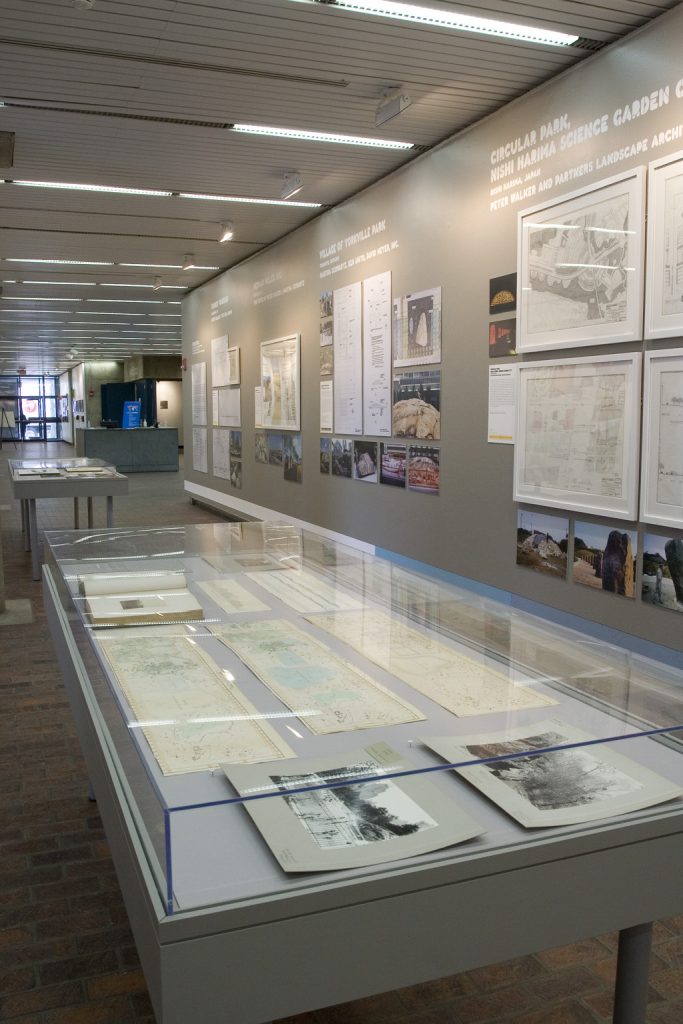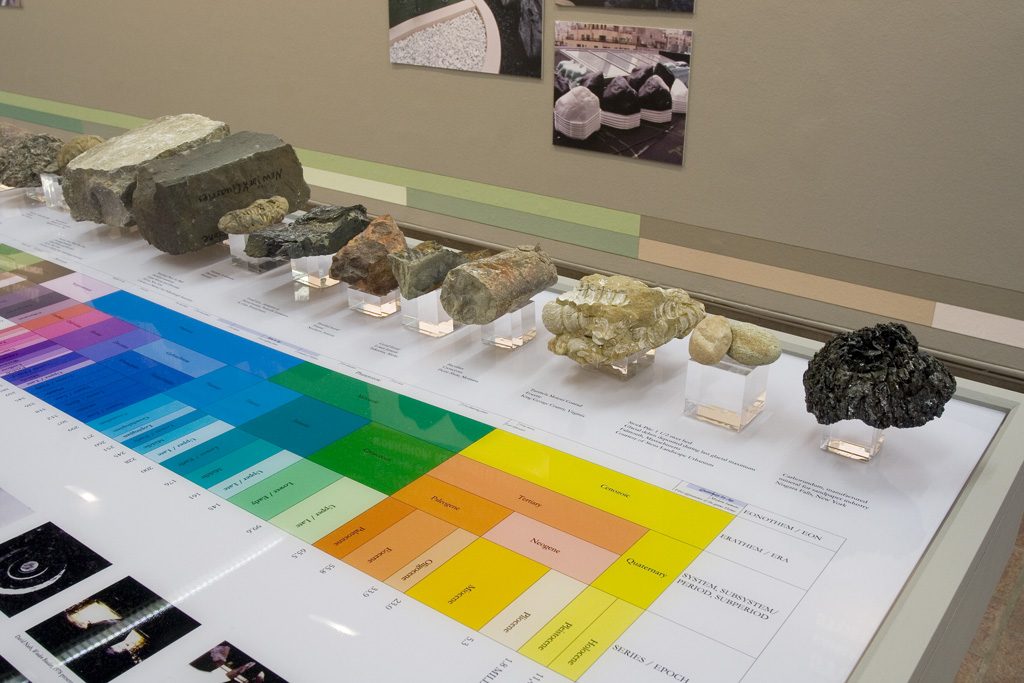Erratics: A Genealogy of Rock Landscape, Featuring the Work of Claude Cormier Architectes Paysagistes
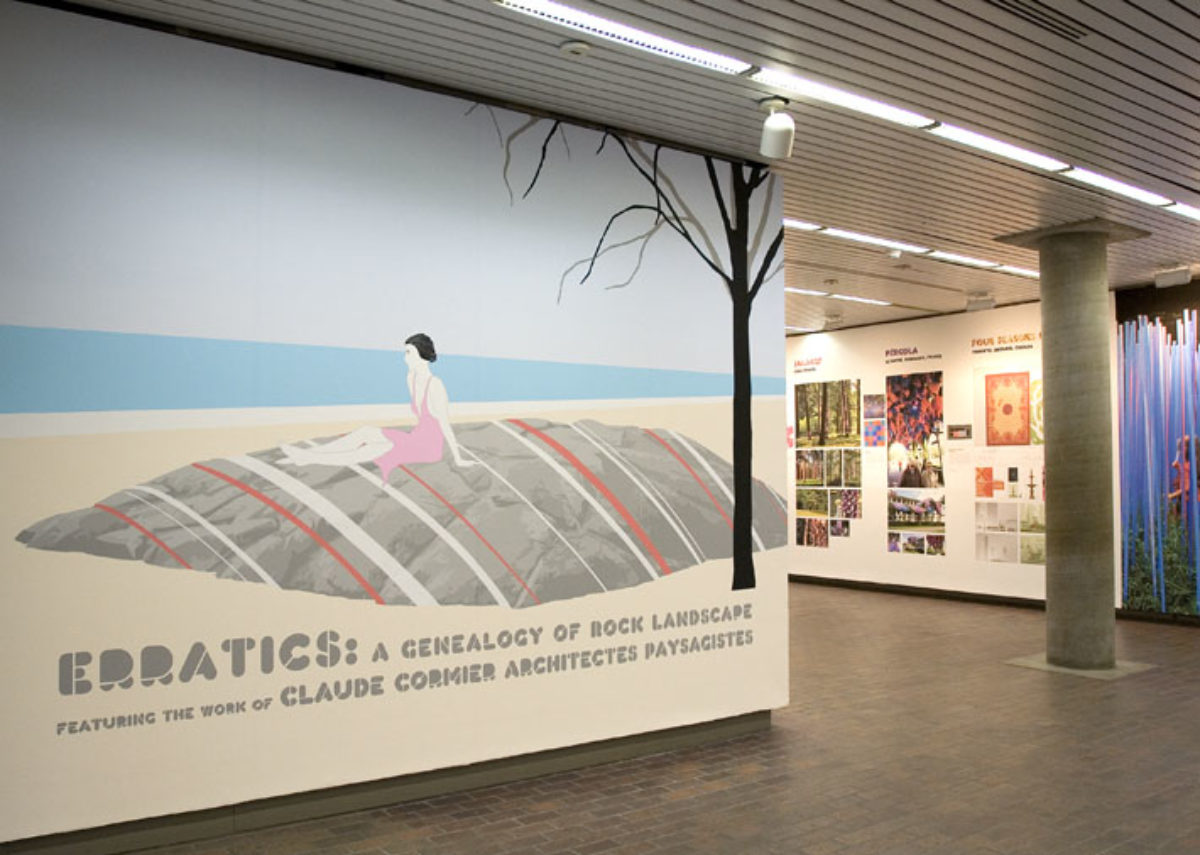
Erratics proposed a speculative genealogy of rock-based landscape architecture, featuring work associated with Harvard University, the Graduate School of Design, and the Department of Landscape Architecture. This array of sites, scales, and approaches was paired with a presentation of projects by Montreal-based Claude Cormier (MDes ‘94), an emerging international voice and principal of Claude Cormier Architectes Paysagistes, one of Canada’s leading landscape architecture firms. Sugar Beach, Cormier’s recent public landscape on the Toronto waterfront, was the point of connection for these two explorations; the project exemplifies landscape architecture’s longstanding fascination with erratics — rocks deposited by glacial movements — and the opportunities for invention that they inspire.
On view were significant precursors to Sugar Beach, including SWA’s (Peter Walker) Tanner Fountain on the Harvard Campus (1985); the granite outcropping in Martha Schwartz, Ken Smith, and David Meyer’s Yorkville Park in Toronto (1994); Michael Van Valkenburgh Associates’ Teardrop Park in New York City (2004); and Workshop: Ken Smith Landscape Architect’s MoMA Roof Garden in New York City (2005). Sugar Beach is the latest of seventeen landscapes designed by CCAP over the past decade—projects animated by their use of color, camouflage, and games of visual perception.
The design work on display was augmented by slides, photographs, and drawings that highlight relationships among cultural production, the earth sciences, and landscape architecture over the past 150 years. This material drew from the Harvard holdings of the Special Collections Department of the Frances Loeb Library, the Cabot Science Library, and the Ernst Mayr Library.
With this juxtaposition of modes of operation within landscape architecture, around a common theme, Erratics emphasized the complex and sometimes contradictory affinities and influences associated with disciplinary and professional cultures, while also revealing the internal consistency and explicit methodological concerns of the designer as autonomous agent.
Jane Hutton, Curator
